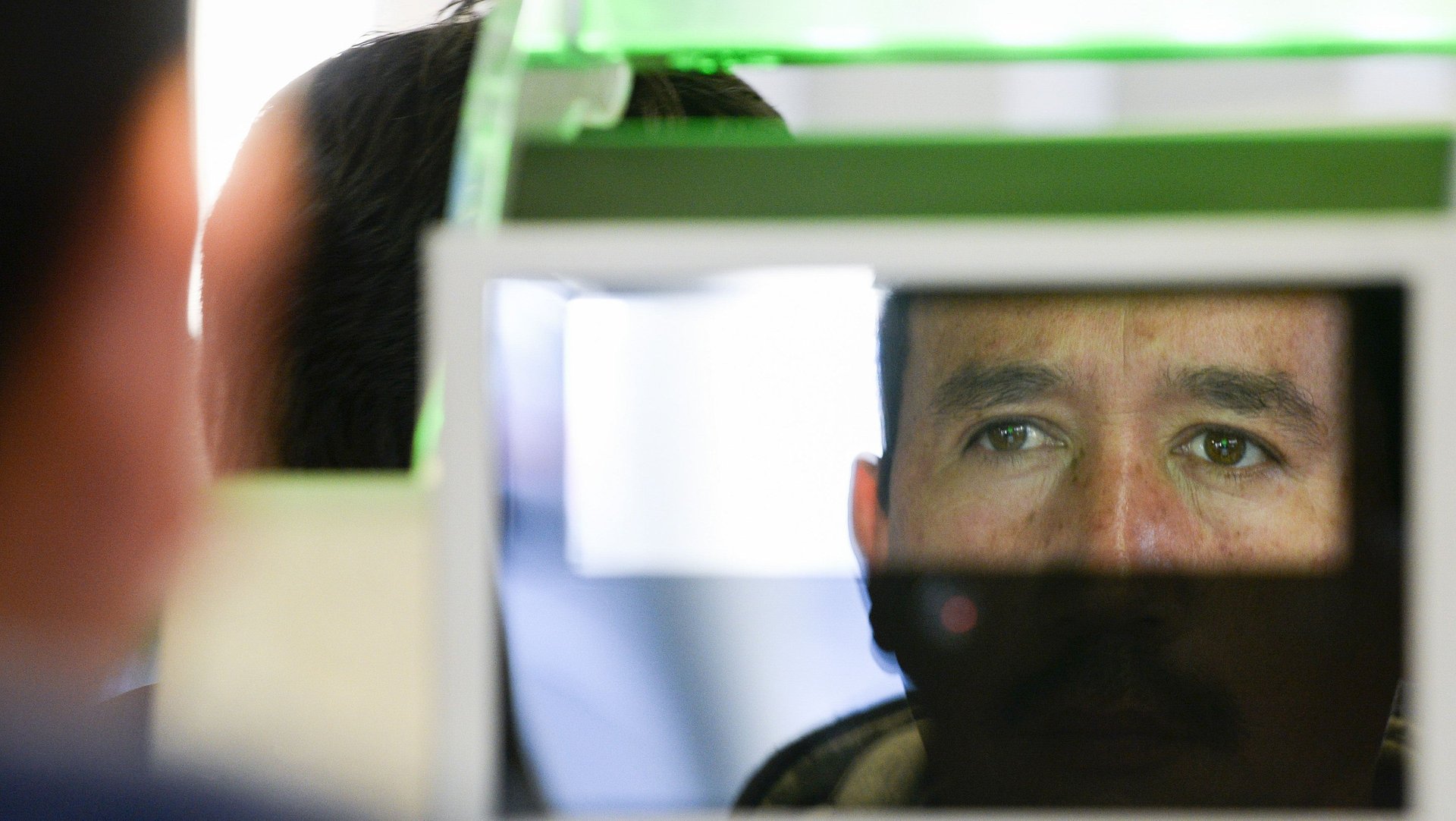Eye scans could deter as many illegal immigrants to the US as a border wall
The US is testing what could be a powerful new deterrent against illegal immigration.


The US is testing what could be a powerful new deterrent against illegal immigration.
Between 40% and 50% of the people illegally living in the US—as many as six million people, according to an estimate by the Pew Research Center—didn’t sneak in, but entered legally, and then overstayed their visas. Up to now, US border officials have had no way of knowing who overstays, because while they check everyone who comes into the country legally, they don’t keep a record of who leaves by land for Mexico. (On the northern border, Canada shares information about foreigners leaving the US.)
The US Congress mandated that customs officials develop an exit-data collection system (pdf, page 2) in 1996, but they have failed so far due to the steep cost and the potential for delays at the border.
But starting Dec. 10, travelers entering the US by foot through the Otay Mesa crossing in San Diego have had to undergo eye scans. Starting in February, foreigners headed to Mexico will also be scanned. It’s a trial program that will last for up to six months, according to US Customs and Border Protection. If the program were extended throughout the border, the US would know exactly who those overstayers are.
That wouldn’t necessarily mean that the US would use that information to go after them—but it could. Many immigrants already live in fear of being deported, even as they remain largely anonymous. That fear might grow unbearable if they know the government has their names and other personal details.
The new information could also lead to changes in the US’s immigration enforcement policies, which now focus heavily on patrolling the southern border.
“When you look at how we target it, you would think the entire problem is at the border between the ports of entry,” as opposed to people coming into the country legally and then overstaying their visas, said Marc Rosenblum, deputy director of the US Immigration Policy Program at the Migration Policy Institute.
But being able to track everyone is still a long way away, he adds. The experiment in Otay Mesa only involves pedestrians. Scanning visitors traveling by car without worsening the already long lines at border crossings will be harder. Officials are also testing whether eye-scanning technology, which is usually used indoors, will work outside.